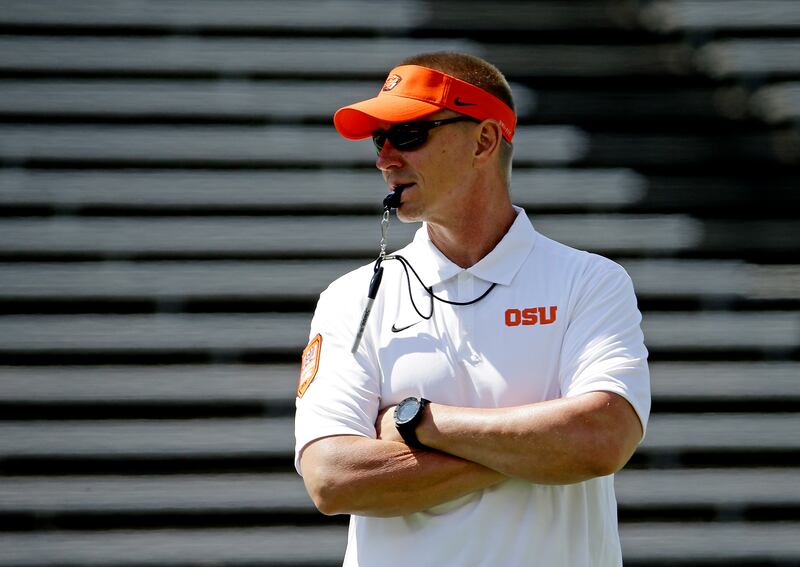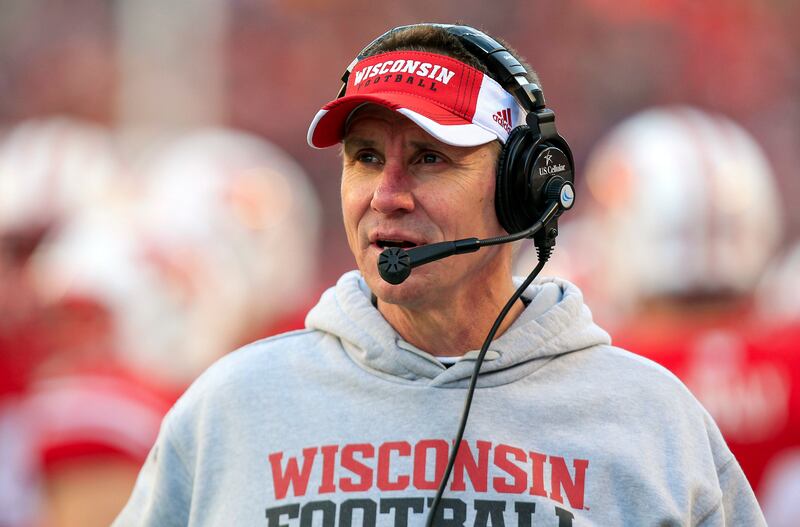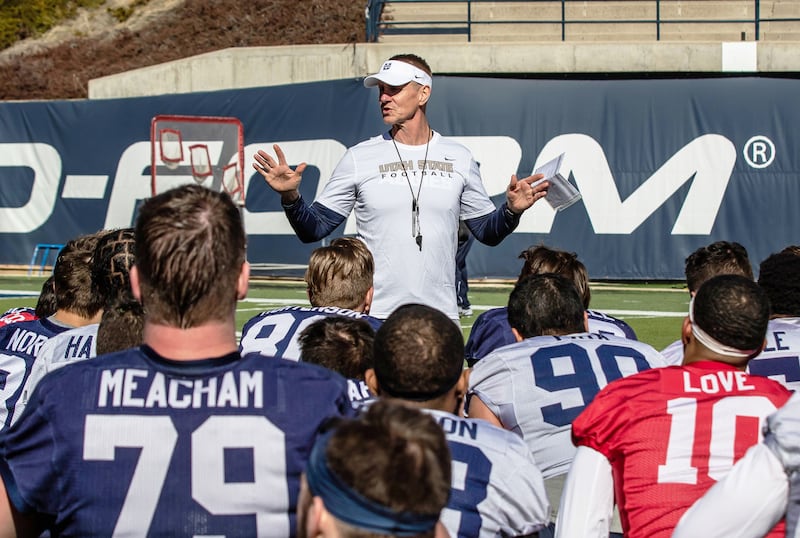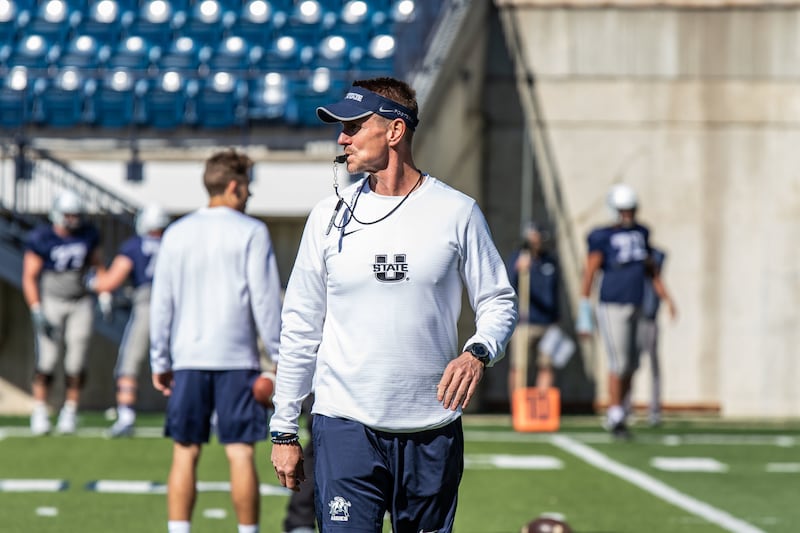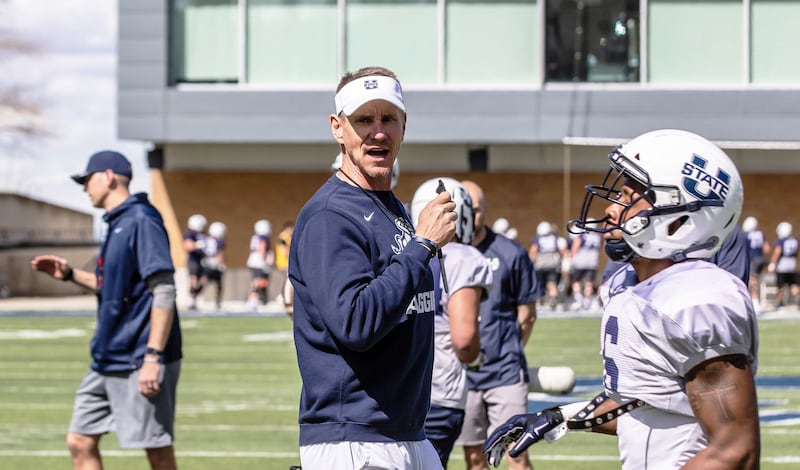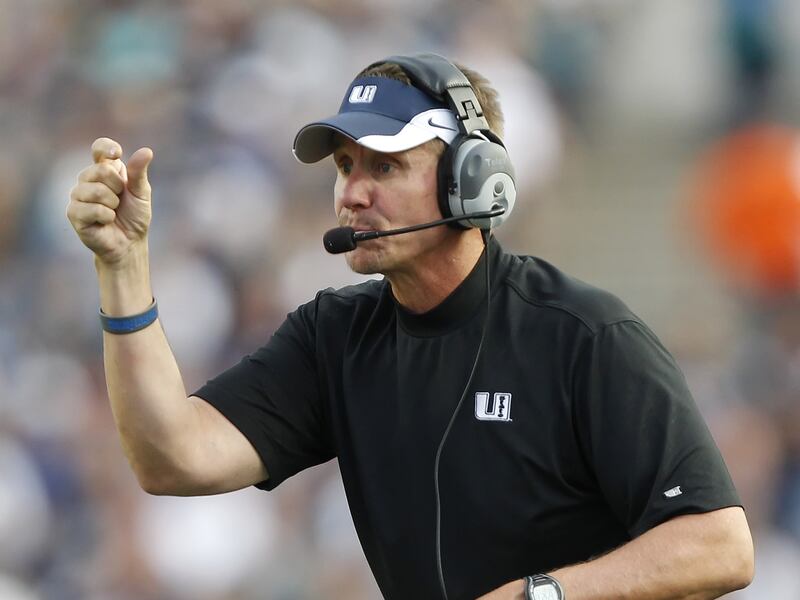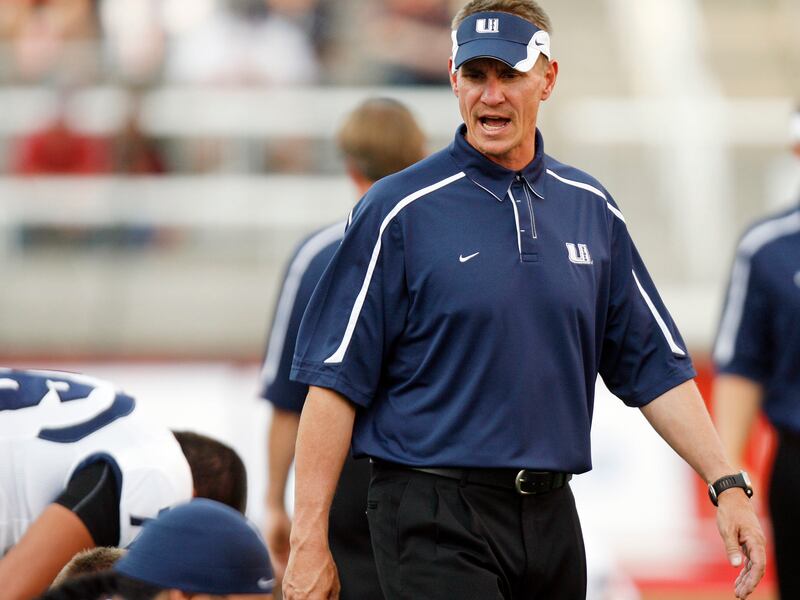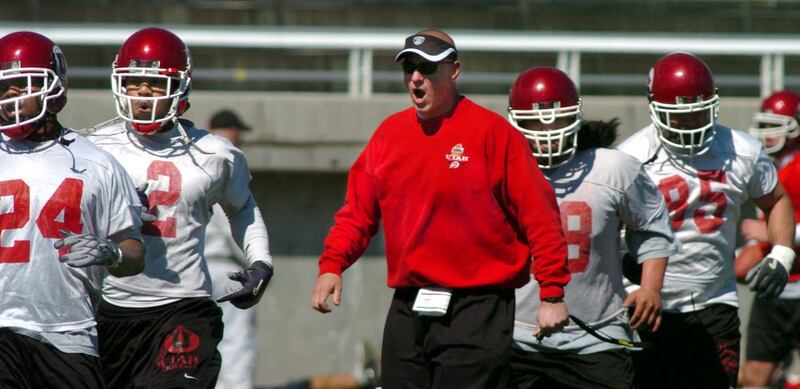LOGAN — Gary Andersen appeared at football practice this week, the lean and focused man he always was. The only thing that had changed was his trademark visor.
After six years of wearing red or orange, he’s back to Aggie blue.
The well-traveled Utah State football coach begins his second turn with the Big Blue on Aug. 30, amid high expectations. On Thursday there was the usual talk of hard work, camaraderie, position battles, aspirations, leadership and love (both team love and QB Jordan Love). Andersen also discussed again being a head coach after a year as an assistant head coach at Utah.
What he never addresses in depth are the reasons he left Wisconsin and Oregon State, only to wind up back where he started his FBS head coaching career. His default answer: It’s ancient history.
It’s also one of history’s more fascinating sagas.
Andersen’s journey has been accentuated by sudden dramatic turns. He spent five years as an assistant at Utah, then took the top job at Southern Utah, but only stayed a year. After five more years as an assistant at Utah, he landed the USU job in 2009.
Andersen departed Logan in December 2012 for Wisconsin, having resurrected one of the country’s sorriest programs. But two years later he jumped to Oregon State. It was a shocking move. He explained that he wanted to get back in the West, in familiar recruiting territory and nearer to family. But among coaches, Wisconsin is considered one of the best jobs in football. The money, exposure and recruiting clout are tremendous, yet fan expectations aren’t over the top.
With Michigan and Ohio State in the same conference, no one seriously expects the Badgers to dominate. It’s a position with pressure, but not national championship assumptions.
After going an impressive 13-3 in the Big Ten over two years, the move to Oregon State — a school that has an athletic budget approximately $30 million smaller than Wisconsin’s — seemed strange. Andersen admitted that academic requirements made it hard to recruit to Madison.
This is where the plot seriously thickens. He coached 2 ½ years at OSU, leaving halfway through the 2017 season. His record there was 7-23.
One adage coaches use is that they love their jobs so much they’d do it for free. That’s mostly blather, considering nearly two-thirds of head coaches at FBS programs earn more than $1 million annually. The average FBS coach makes more than $2 million.
At the same time, if ever a coach could claim it isn’t about the money, it’s Andersen. There was a $3 million buyout when he left Wisconsin. It’s unclear whether he or the Beavers actually paid for that. But there’s no ambiguity as to who took the hit when he walked away from $12 million at Oregon State.
It’s not always about the Benjamins.
“It never has been, you know?” Andersen said.
The last coach at USU made $900,000, far below Andersen’s salary at OSU and Wisconsin, and roughly what coordinators earn at Utah. But he says he’s thrilled to be back in Logan.
“I love being around the kids ... but for me, when you’re in a position to be at a university that has really core beliefs you have ... it’s very comforting for me, and I’m in my comfort zone in those positions.”
He never did sell his house in Logan after moving away.
“I wake up in the morning and I get to come to work. I get to drive down the hill and get to pull in to this facility,” he said, “and I don’t ever take that for granted.”
Andersen did bail on his Oregon State team in the middle of a year, which goes against the coaching credo of unity and overcoming adversity. But he didn’t negotiate a buyout or hold the school to the length of the contract, though reports said he could have.
He put his money where his mouth was.
Nearly two years later, he says nothing major has changed about being a head coach.
“You adjust as you go through the years," he said. "But drastic differences? No, not really. You just get older, have a little more back pain at practice, maybe the treadmill beats you down a little bit more as the week goes on. But other than that, I’m good.”
Good with the money he has and good with the money he doesn’t.


